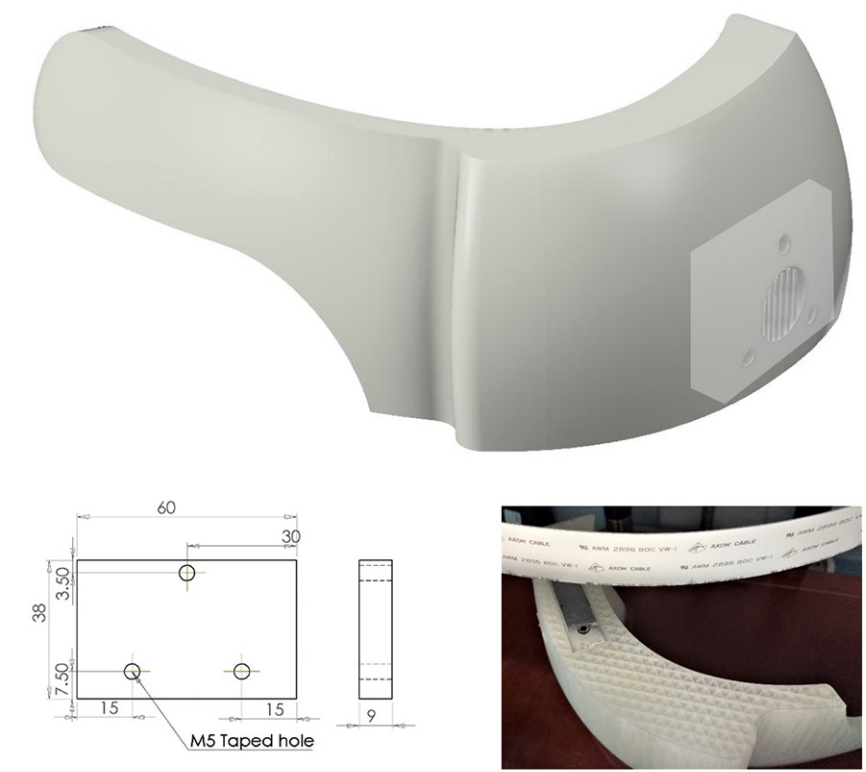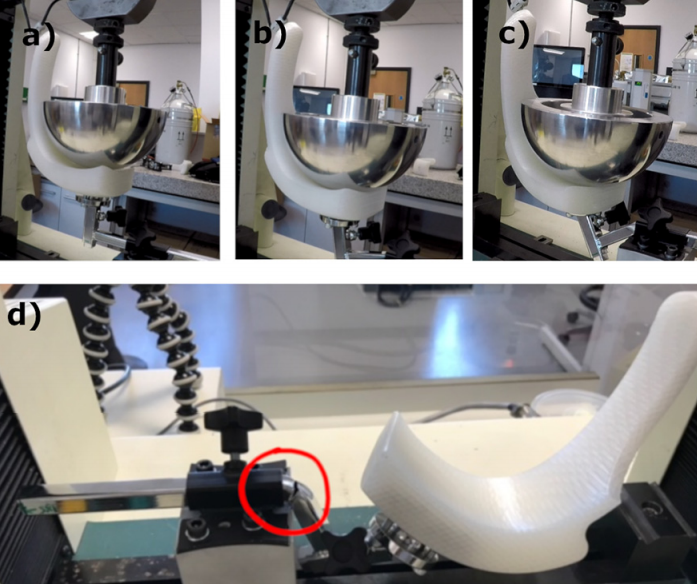A team of researchers from Swansea University, Cardiff Metropolitan University, and Morriston Hospital have proposed a method of 3D printing highly-customizable lightweight head supports for wheelchair users. The engineers pitted their design against a common commercially available head support in a battle of mechanical strength testing and the results indicate the usefulness of AM for individualized accessories.

3D printing head supports
The majority of wheelchair users see their seating needs met by most off-the-shelf backrest cushions and headrests. For a small percentage, however, a more bespoke option may be necessary. Those with more unique anatomies will require highly custom contouring to provide comfort and usability. In the case of headrests, a postural head support fitting the curve of the neck is required to prevent overextension, muscle stiffness, and fatigue.
With this in mind, the Welsh researchers 3D scanned a volunteer’s head and produced a template STL to base their work around. Autodesk Fusion 360 was used to model a head support that would provide left-sided lateral support while avoiding ear contact. Holes were cut in the model to allow the support to interface with UK standard wheelchair bracketry. The researchers used a Markforged Mark Two 3D printer to fabricate three identical nylon head supports and fitted them with ball joints.
Strength testing the custom design
The 3D printed nylon parts were tested against a commercially available Type-G (strength characteristics already are known) head support in two ways. The first saw a posterior force is applied to the inner rear surface of the 3D printed head supports and the second involved applying a lateral force to the inner surface of the left lateral support arm (near the ear). The researchers recorded the force and displacement of the loading pad every 0.5s.

The maximum force reached before fracture during the posterior force test was 3188N, with a maximum displacement of 71.7mm. Upon inspection of the damage, it was concluded that the point of failure was in the aluminum stem of the ball joints, not in the 3D printed head support. The nylon AM part had no permanent plastic deformation and no cracks visible, meaning the UK standard bracketry would give out before the 3D printed head support would.

During the lateral force test, the researchers managed to displace the left arm of the 3D printed support up to a maximum of 143.7mm with a force of 93N. At that point, the test rig was at its maximum displacement and could not affect the head support anymore. The test was stopped and the head support returned to its original contour with no visible permanent plastic deformation. The results prove that through the use of 3D scanning, some clever CAD modeling, and a 3D printer, the researchers were able to produce a lightweight custom wheelchair accessory with the mechanical strength and malleability to rival an established off-the-shelf head support.

Further details of the study can be found in the paper titled ‘Evaluating additive manufacturing for the production of custom head supports: A comparison against a commercial head support under static loading conditions’. It is co-authored by Jonathan Howard, Dominic Eggbeer, Peter Dorrington, Feras Korkees, and Lorna Tasker.
The head support in this study is a prime example of the strength of 3D printing, enabling a cost-efficient method of catering to an individual’s seating needs. Earlier this year, Porsche, known for its high-performance sports cars, had a similar idea with the development of its new 3D printed personalized bucket seats. The bucket seats will initially be limited to 40 prototypes for use on European race tracks. Elsewhere, Triple Eight Race Engineering is using HP MJF 3D printing technology to produce customized steering wheels for race cars. The wheels are designed according to the hands of the driver, with low weight and low production costs.
The nominations for the 2020 3D Printing Industry Awards are now open. Who do you think should make the shortlists for this year’s show? Have your say now.
Subscribe to the 3D Printing Industry newsletter for the latest news in additive manufacturing. You can also stay connected by following us on Twitter and liking us on Facebook.
Looking for a career in additive manufacturing? Visit 3D Printing Jobs for a selection of roles in the industry.
Featured image shows a posterior force test. Photos via Swansea University.



